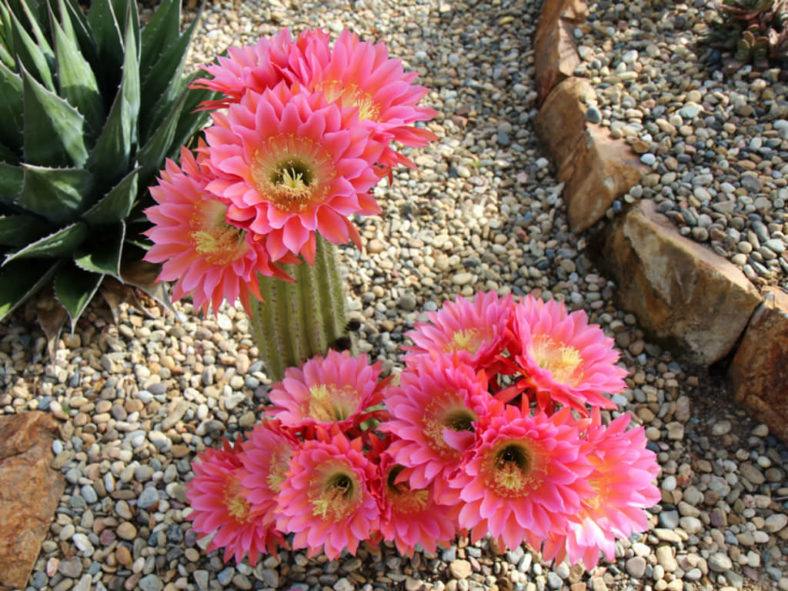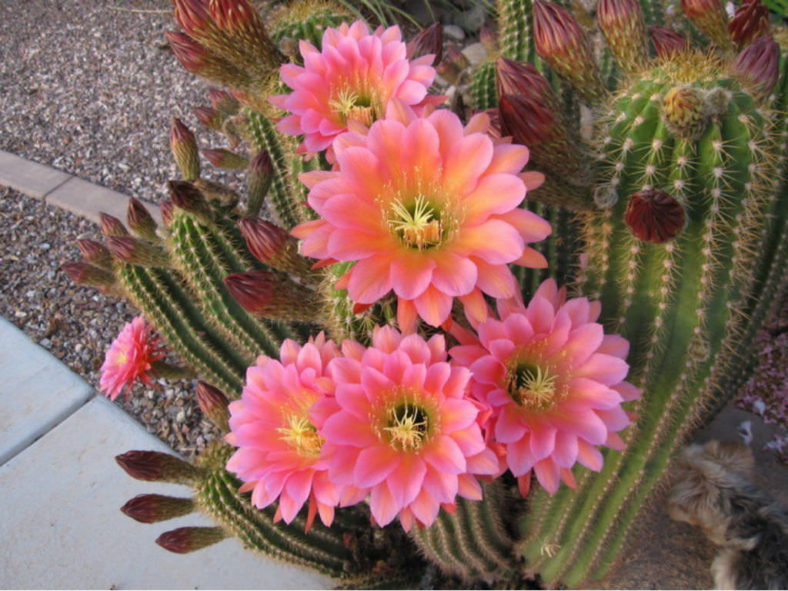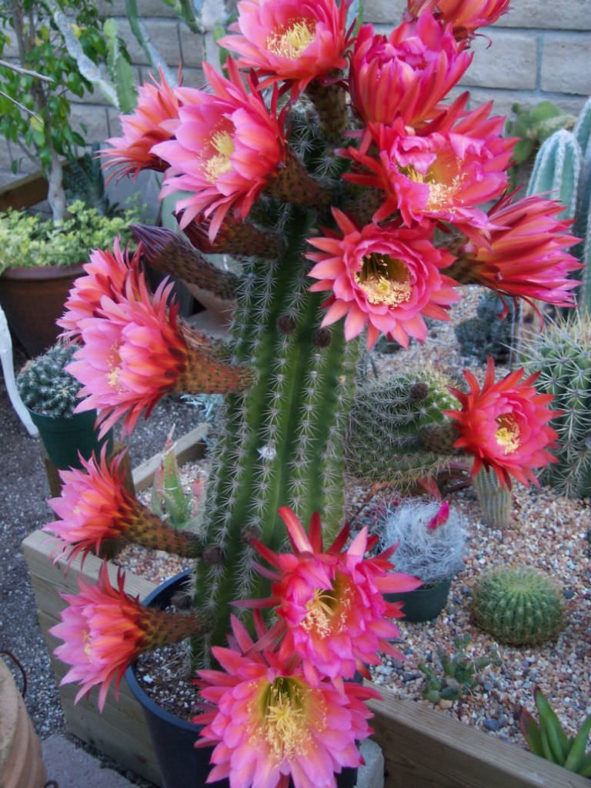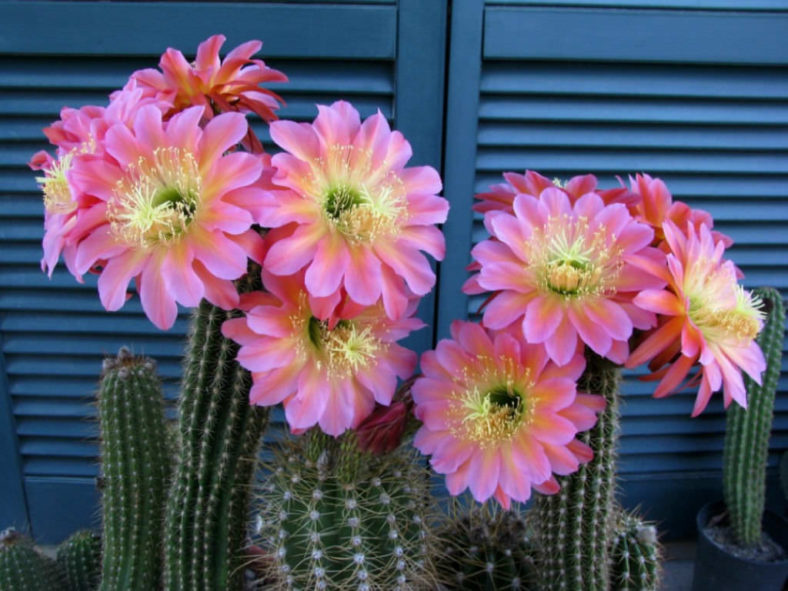Scientific Name
Echinopsis 'Flying Saucer'
Synonym(s)
Trichocereus 'Flying Saucer'
Scientific Classification
Family: Cactaceae
Subfamily: Cactoideae
Tribe: Trichocereeae
Genus: Echinopsis
Origin
Echinopsis 'Flying Saucer' is a hybrid created by Hans Britsch, the owner of Western Cactus Enterprises. The parentage is unknown.
Description
Echinopsis 'Flying Saucer', formerly known as Trichocereus 'Flying Saucer', is a stunning cactus with short columnar, bright green stems that usually have about 14 ribs lined with clusters of spines at intervals of less than an inch (2.5 cm). It is one of the most spectacular Echinopsis hybrids. The stems can grow up to 2.5 feet (75 cm) tall and 5 inches (12.5 cm) in diameter.
While it is handsome year-round, nothing about it prepares you for the show it puts on when it flowers from mid-spring to early summer. The many-petaled flowers are red outside with a hint of orange, giving way to deep pink and a lighter pink, moving progressively inward. The ring of stamens adds a pool of pale yellow, with a well of green at their base. The flowers open in the evening and can reach a diameter of 10 inches (25 cm). Each flower lasts only a day, but the blooming continues for several days.

How to Grow and Care for Echinopsis 'Flying Saucer'
Hardiness: USDA hardiness zone 9b to 10b: from 25°F (-3.9°C) to 40°F (4.4°C).
If you can grow cacti and succulents successfully, you can likely grow the Echinopsis species without too much trouble. Like many cacti, they prefer a drying period between waterings, even when slightly wilted. When you water, however, you should water deeply. The plant will noticeably plump up. The cactus mustn't be exposed to prolonged dampness and standing water. Never let your cactus sit in a dish of water. Lastly, ensure fertilizer during the growing season for the best results.
Echinopsis can be easily rooted from offsets, which tend to cluster around the base of the mother plant. Cut offsets close to the stem at the narrowest point. When rooting cacti from cuttings, let the fresh cut dry out slightly on a paper towel, and cut the cacti at the narrowest possible place. After a few days to a few weeks, depending on the size of the cut surface, it should have dried and formed a callous or a slightly rough opening. Once the callous has formed, place the cutting in a rooting mixture of fast-draining cacti soil.
See more at How to Grow and Care for Echinopsis.
Links
- Back to genus Echinopsis
- Succupedia: Browse succulents by Scientific Name, Common Name, Genus, Family, USDA Hardiness Zone, Origin, or cacti by Genus
Photo Gallery
Click on a photo to see a larger version.


